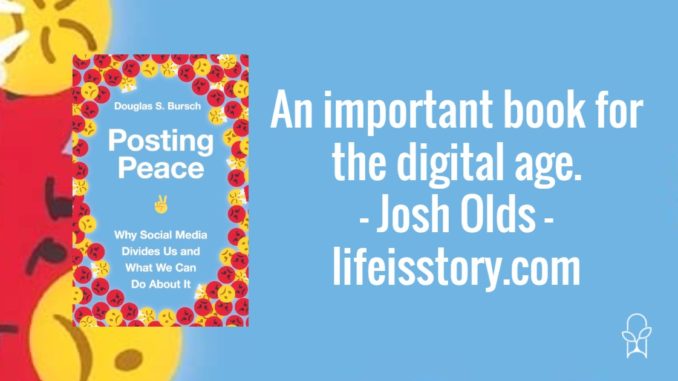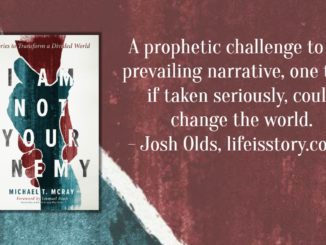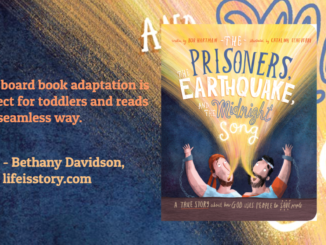
Published by IVP on April 20, 2021
Genres: Non-Fiction, Christian Life, Politics
Buy on Amazon
Goodreads

Why is everyone so angry online? The internet seems to have brought the world together only so we can tear each other apart. Social media platforms have become toxic and polarizing environments. Many of us are overwhelmed and disillusioned by the endless online conflict and negativity. How did we get here, and what can we do about it? The internet is changing not only how we communicate but also what we communicate. Pastor and former radio host Douglas Bursch provides a spiritual examination of why social media divides people and how Christians can address polarization through a ministry of peacemaking. He unpacks how technology radically changes the way we communicate--digital media dehumanizes and disembodies us, dulling our ability to know when to speak and when to remain silent. But healthy online communication is possible through a constructive posture of reconciliation. Bursch offers practical examples of how to proactively manage social media and handle online conflict in redemptive, reconciling ways. Change the discourse of online Christian communication. Discover how we can use social media in a positive, Christ-like manner.
I haven’t always been the best on social media. I need to begin this review by admitting that. Ever since about 2015, social media has been divisive. I mean, life has been divisive. Politics have been divisive. Religion has been divisive. And the way in which we, as a culture and as Christians, navigate those divisions has been divisive. In Posting Peace, Douglas Bursch leads readers into a different path. Not one that avoids controversy or kowtows to criticism, but one that understands how to take a posture of love, concern, and conciliation rather than just attempt to win an argument.
The first couple chapters of Posting Peace seeks to understand what it is about social media that causes us to argue and communicate differently. Part of is that body language and tone is often lost amid the conversation. It becomes harder to engage in the nuances of conversation. Written language is different than spoken language. Speaking for myself, I’ve gotten into conversations where the tone of conversation between myself and another person weren’t aligning, but I didn’t see that until later. There’s also the issue of the conversation being public and easily interjected into. I may post a reply with a certain individual in mind, they may understand it and follow it, but someone else down the line reading may take offense. It’s a complicated process that’s furthered because of how social media depersonalizes and disembodies us. Bursch goes through all of this, then asks readers to consciously view their conversations as taking place in person with that other person.
As the book progresses, Bursch moves from the theoretical backdrop into the practicalities of reality. What can we do specifically to nurture the practice of Posting Peace? At the heart of the answer—and this is still more of a generality—we must embrace the ministry of reconciliation.
Social media polarization will not decrease until individuals begin to wholeheartedly embrace the ministry of reconciliation as a motivating factor for their online interactions…Believers must contend for truth in a way that brings people closer to God and closer to each other.
As he moves into the practicalities, Bursch asks readers to answer the following questions:
- Is reconciliation my motivation?
- Are people my priority?
- Am I communicating truth with love?
- Where is the grace?
- What is the Spirit saying?
Understanding those answers will go a long way to shaping what we post and how we post it. Further, each chapter of Posting Peace ends with a series of discussion questions. These questions reflect upon the chapter, really digging into the material and forcing readers to not just gloss over the important points. Bursch doesn’t just tell you what to do, he tells you how to do it and spurs you toward action. Lastly, I appreciated that Posting Peace includes a chapter on how we should be divisive. Bursch recognizes that, yes, sometimes justice demands conflict. But even in the midst of conflict, the purpose is to end in reconciliation.
Posting Peace is an important book for this digital age. Bursch manages to make his points clearly and concisely, navigating divisive issues without getting bogged down into them. And that may be the most important part of the book. Bursch’s balance means that he doesn’t point the finger to any one group and claim that “they started it.” He doesn’t justify or condone any of it. His examples and anecdotes span the political and religious spectrum. And in such, it can be a call to unify. Posting Peace leads us toward a better way of communicating, one that sheds light instead of bringing heat, one firmly rooted in the ministry of reconciliation and devoted to the art of peacemaking.



